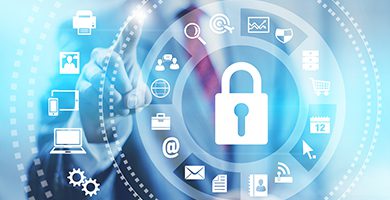In an increasingly interconnected world, the lines between physical security and cybersecurity are becoming increasingly blurred. The convergence of these two domains is not just a trend but a necessity, as modern threats often encompass both physical and digital elements. This comprehensive approach ensures a holistic defense strategy that can effectively mitigate risks in today’s complex threat landscape.
The Convergence of Physical and Cyber Threats
Historically, physical security focused on protecting tangible assets like buildings, equipment, and personnel. This included measures such as locks, surveillance cameras, and security guards. Cybersecurity, on the other hand, aimed at safeguarding information and systems from digital threats like hacking, malware, and data breaches.
However, the advent of the Internet of Things (IoT), smart devices, and advanced networking technologies has intertwined these two realms. Physical devices are now often connected to networks, making them susceptible to cyber attacks. Conversely, cyber attacks can have physical consequences, such as shutting down critical infrastructure or manipulating security systems.
Key Integration Areas
- Access Control Systems Modern access control systems integrate both physical and cybersecurity measures. For instance, biometric scanners and smart cards not only control physical access to buildings but also interact with digital databases to verify identities. A breach in the digital component can compromise physical security, allowing unauthorized access.
- Surveillance Systems Surveillance cameras and sensors are now often IP-based, meaning they are connected to the internet and can be accessed remotely. While this enhances monitoring capabilities, it also introduces vulnerabilities. Hackers can potentially gain control of these systems, disable them, or manipulate the footage, which compromises both physical and cybersecurity.
- Industrial Control Systems (ICS) Industrial facilities, such as power plants and manufacturing units, use ICS to manage their operations. These systems are increasingly networked for efficiency but are also becoming targets for cyber attacks. A successful breach can lead to physical damage, such as sabotaging machinery or causing explosions.
Integrated Security Strategies
To address these interconnected threats, organizations need to adopt integrated security strategies that encompass both physical and cybersecurity elements. Here are some essential steps:
- Unified Risk Assessment Conduct comprehensive risk assessments that consider both physical and digital threats. This holistic approach ensures that all potential vulnerabilities are identified and addressed.
- Cross-Disciplinary Teams Establish teams that include both physical security and IT professionals. Collaboration between these experts ensures that security measures are robust and comprehensive, covering all potential attack vectors.
- Advanced Monitoring Solutions Deploy advanced monitoring solutions that can detect and respond to both physical and cyber threats in real-time. For example, integrating video surveillance with cybersecurity incident detection systems can provide a more complete picture of security incidents.
- Training and Awareness Train employees on the importance of both physical and cybersecurity. Awareness programs should highlight how actions in one domain can impact the other, fostering a culture of security consciousness throughout the organization.
- Incident Response Planning Develop and regularly update incident response plans that address both physical and cyber incidents. These plans should include protocols for communication, coordination, and recovery to minimize the impact of any breach.
The Role of Emerging Technologies
Emerging technologies like artificial intelligence (AI), machine learning (ML), and blockchain are playing a significant role in enhancing the integration of physical and cybersecurity. AI and ML can analyze vast amounts of data to identify patterns and predict potential threats, allowing for proactive security measures. Blockchain technology, with its decentralized and immutable nature, can secure transactions and communications between physical and digital systems, reducing the risk of tampering and fraud.
Summary
In conclusion, the intersection of physical and cybersecurity is a critical area that organizations must address to protect their assets and operations effectively. By adopting integrated security strategies, leveraging emerging technologies, and fostering a culture of security awareness, organizations can build resilient defenses against the multifaceted threats of the modern world. As technology continues to evolve, so too must our approaches to security, ensuring that we stay one step ahead of potential adversaries.




